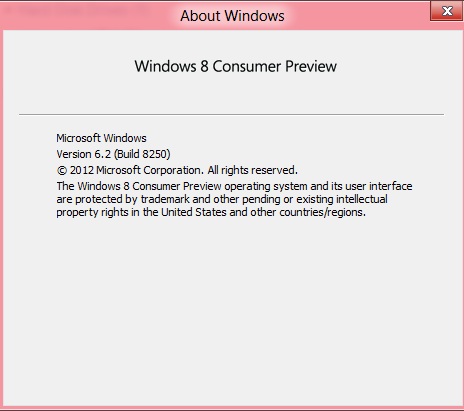Windows 8 Editions
Multiple versions, convoluted naming conventions and separation of the user base (i.e. consumer vs. business) are sometimes associated with the Windows brand. That perception is about to change however with the introduction of Windows 8. Basically there will be 3 editions that are clear, concise and to the point. These editions are the following:
- Windows 8: The official product name for the next x86/64 editions of Windows (i.e. 32 and 64 bit versions).
- Windows 8 Pro: Contains all of the features within the base Windows 8 installation plus encryption, virtualization, PC management and domain connectivity features.
- Windows RT (aka: Windows on ARM [WOA] ): This edition will be pre-installed on PCs and tablets powered by ARM processors.
While these are the 3 main editions I should mention a fourth which is the Windows 8 Enterprise edition. This edition is only for I.T. organizations and will enable PC management and deployment, advanced security, virtualization, new mobility scenarios, and much more.
The list of features available for these editions is still in flux but there are product guides available which do a great job in illustrating what each edition is comprised of (i.e. consumer vs. business).
Playing devil’s advocate for a moment, some may say that even 4 editions are too much and there should only be one edition labeled “Windows” period. Or maybe two at the max if you want to have a dedicated mobile edition. Using that assumption, in essence though the aforementioned editions add simplification to the brand so it’s not difficult at all to ascertain which edition should be utilized. Sure, there are add-on’s like the Pro/Media Center Pack but even here, it’s easy to understand why this optional pack is needed. Now whether or not you believe this pack should be included in Windows 8 is another story.
Having a straight forward product line is fantastic but obviously marketing plays a role in how this is conveyed. If implemented correctly then the ambiguity for consumers and enterprise users should be nil and the focus for both could be on productivity and user adoption verses the “What Windows edition is right for me?” question.
Clearly this is an evolving topic as Windows Server 8 will also play a pivotal role although more so for I.T. Administrators than for end users. The next few months will certainly be interesting, culminating with the release of Windows 8 sometime in the not so distant future.
For additional information check out the official Windows Team Blog, Windows 8 blog and the Windows Consumer Preview site.
